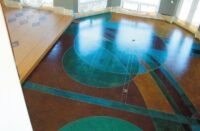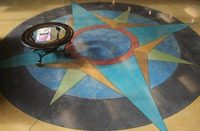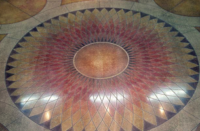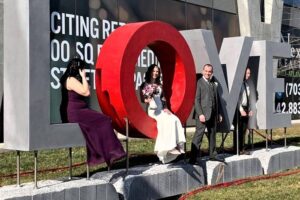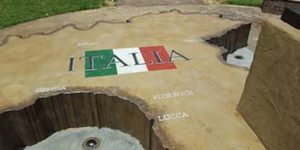
In rather ordinary gray concrete, Berlin’s Holocaust Memorial makes an extraordinary statement.
Situated near Brandenburg Gate on a stretch of land once referred to as the “death strip” where the formidable Berlin Wall once loomed, the Memorial to the Murdered Jews of Europe was built to commemorate the 6 million Jewish victims of the Nazi genocide during World War II.
 The memorial, which has no signage telling visitors and passers-by what it is, is near many foreign embassies, including the United States’, as well as the Reichtag, the home of the German parliament, whose glass dome can be seen in the distance.
The memorial, which has no signage telling visitors and passers-by what it is, is near many foreign embassies, including the United States’, as well as the Reichtag, the home of the German parliament, whose glass dome can be seen in the distance.
On the southeast side of the memorial, there’s an easily missed underground information center accessible via two flights of stairs. The center houses documents about Jewish individuals and families, as well as recordings and information about memorials throughout Europe.
 The Holocaust Memorial was designed by American architect Peter Eisenman and completed in 2005 on a nearly 5-acre site. Originally conceived to contain 4,000 rectangular blocks of concrete, also called “stelae,” the memorial was scaled down to 2,711. Both numbers are random and have no symbolic significance. There are 54 rows going north to south and 87 arranged from east to west.
The Holocaust Memorial was designed by American architect Peter Eisenman and completed in 2005 on a nearly 5-acre site. Originally conceived to contain 4,000 rectangular blocks of concrete, also called “stelae,” the memorial was scaled down to 2,711. Both numbers are random and have no symbolic significance. There are 54 rows going north to south and 87 arranged from east to west.
According to Eisenman’s project description, the stelae are designed to emit an uneasy, confusing atmosphere, even though they are built in a grid pattern, albeit a bit askew. The ground undulates and the seemingly endless rows of gray matter consist of concrete rectangles measuring 7 feet 10 inches long, 3 feet 1 inch wide and varying in height from about 8 inches to almost 15 ½ feet. Toward the center as you descend into the memorial, the stelae get taller and taller until the ground gradually ascends and they begin to shrink in size.
Overall, some say the arrangement reminds them of coffins laid end to end. Others contend they resemble tombstones in a very orderly cemetery. But few will argue — the site is thought-provoking and unsettling but something you should see if you visit Berlin.
